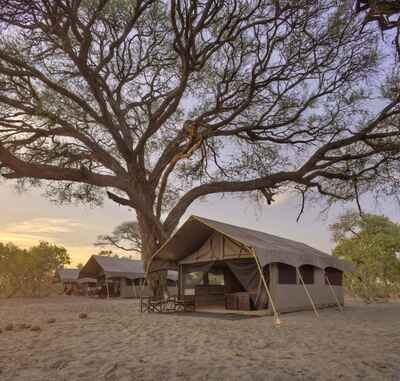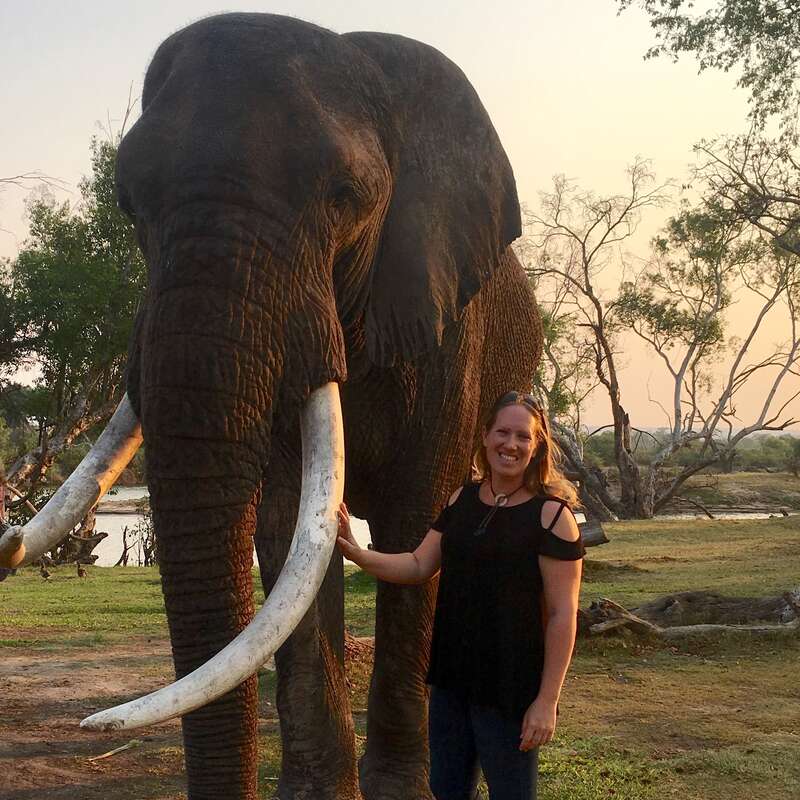About Savute Under Canvas
A high-quality “glamping” experience which moves locations around the Savuti area, but always offers creature comforts and big-game 4WD safaris.
For the ultimate in glamping, look no further than Savute Under Canvas. At first glance, it’s the simplest of bushcamps.
Its five tents move every few days within the Savute area of Chobe National Park so that it leaves the lightest impression on the fragile environment. But appearances can be deceptive, even in a totally natural setting. Each of those tents is en suite – complete with flushing toilets and wonderfully hot showers on request.
The beds are genuinely comfortable, the food fresh, good and plentiful (do take a look “backstage”: it’s astonishing what the cooks achieve in such rudimentary conditions), and the service exemplary; how about a cooling footbath to counter the afternoon heat?
As often as not, you’ll dine under the stars around the campfire, but a simple mess tent does service as a bar, dining room and general chat area, where tales of the day’s adventures can be shared with personable and knowledgeable guides. And at Savute Under Canvas, you should have plenty of tales – from the heart-stopping moments when animals roam into camp to the broad open spaces of the Savuti Marshes, where lion and wild dog seek out the pans – and their prey.
Our view
Savute Under Canvas suits those seeking an adventurous, yet very comfortable, mobile-camping experience. The service, food and guiding are typically excellent, run by an experienced and hospitable team, and you can expect good game viewing, with the highest concentration of wildlife. It’s more economical than many of Botswana’s permanent safari camps, too, particularly during the peak season from June to October. Although national-park restrictions preclude night drives, guided walks and off-roading, and you can get crowding of vehicles at noteworthy sightings, we think Savute Under Canvas is a terrific option for those wanting something a bit different from Botswana’s luxury and permanent accommodation – we loved it!
Accommodation
5 Meru-style tents
Children
Best for 16+
Open
1 February to 31 December
Activities

4WD Safari

Birdwatching

Helicopter

Private activities
Traveller reviews of Savute Under Canvas
25 real, un-edited reviews from Expert Africa's travellers.
Arrived 10 Nov 2024, 4 nights
"Savute Under Canvas review"
Overall rating: Good
Arrived 3 Jun 2024, 3 nights
"Savute Under Canvas review"
Overall rating: Excellent
Arrived 7 Sep 2023, 3 nights
"Authentic bush experience with a great crew"
Overall rating: Excellent
Arrived 15 Jul 2023, 2 nights
"Savute Under Canvas review"
Overall rating: Excellent
Arrived 6 Sep 2022, 2 nights
"Savute Under Canvas review"
Overall rating: Excellent
Arrived 27 May 2022, 3 nights
"A bit disappointing"
Overall rating: Good
Arrived 28 Apr 2022, 2 nights
"Savute Under Canvas review"
Overall rating: Excellent
Arrived 14 Sep 2018, 2 nights
"Savute Under Canvas review"
Overall rating: Excellent
Arrived 6 Sep 2018, 3 nights
"Savute Under Canvas review"
Overall rating: Excellent
Arrived 26 Jul 2018, 2 nights
"Cold nights (end July) but enjoyable safari"
Overall rating: Excellent
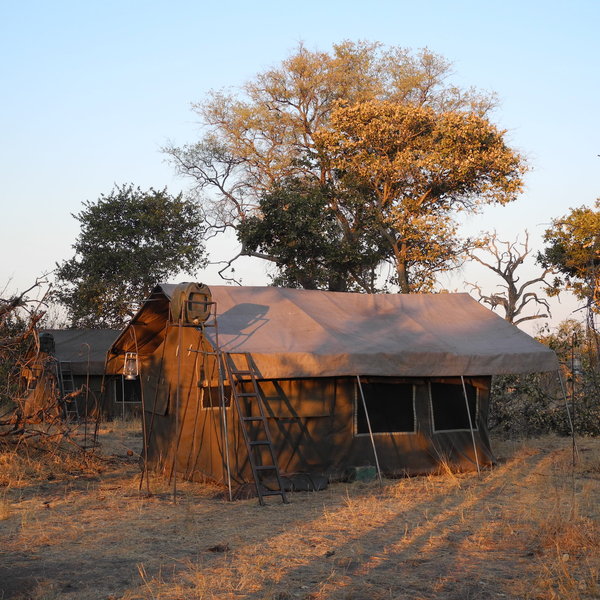
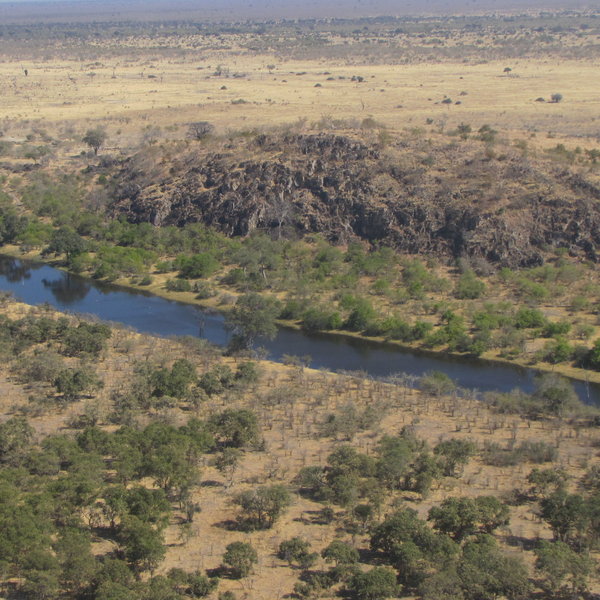
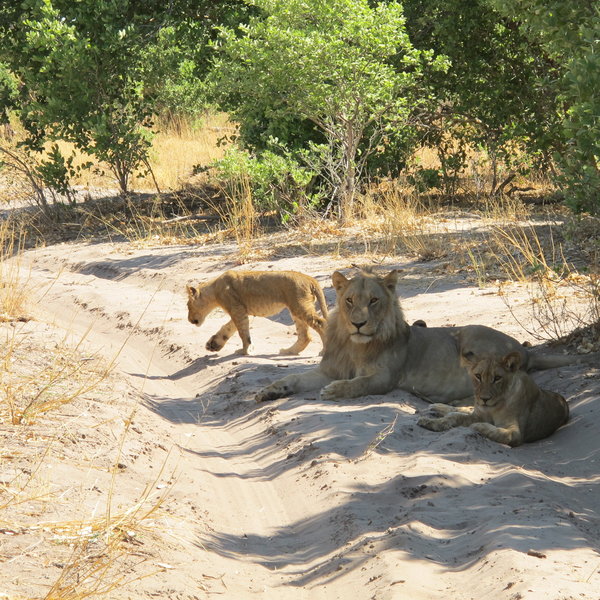
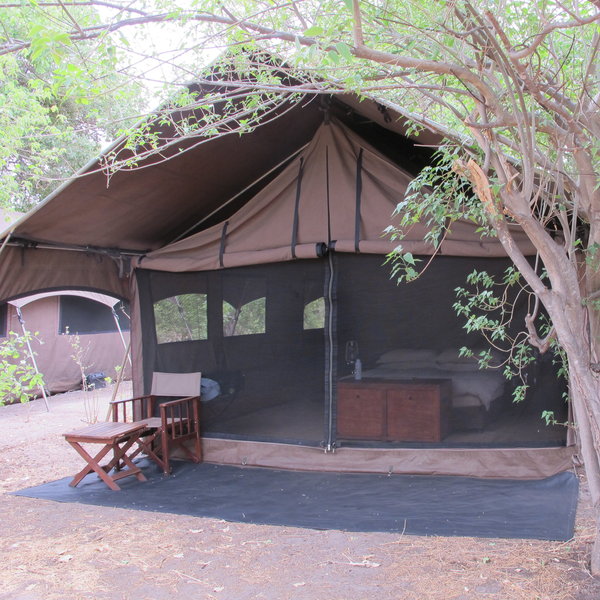
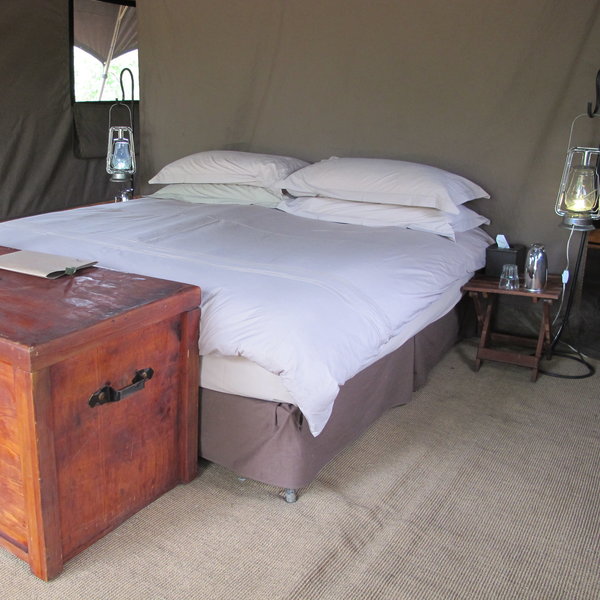
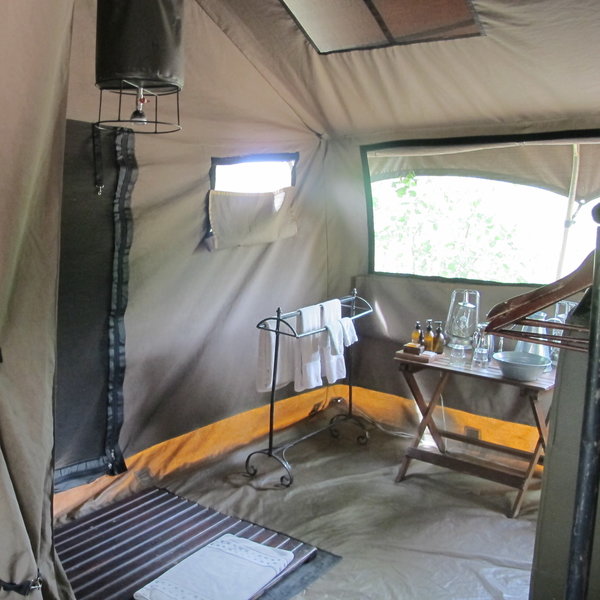
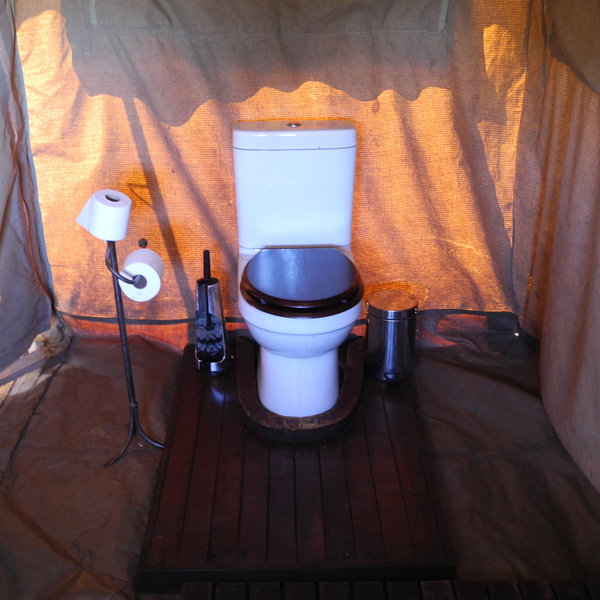
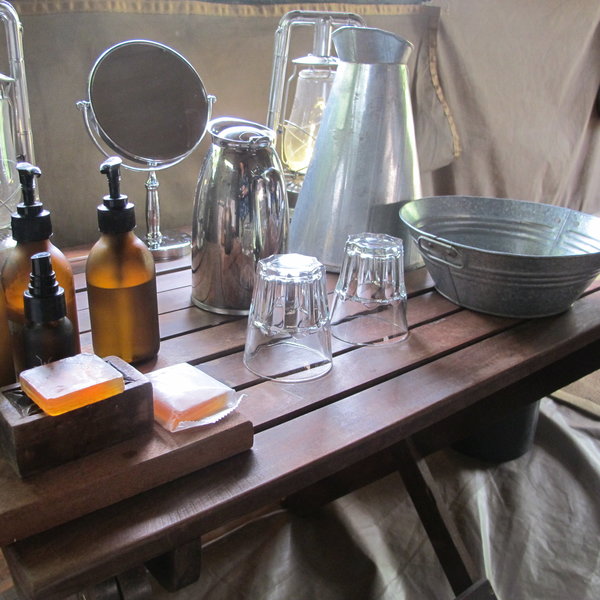
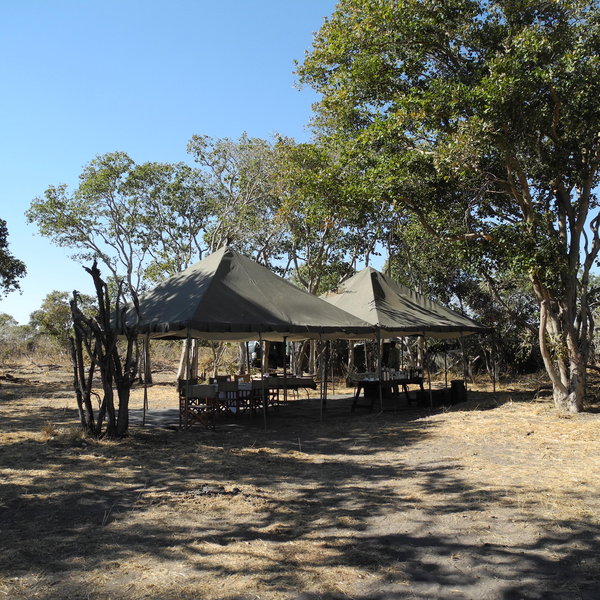
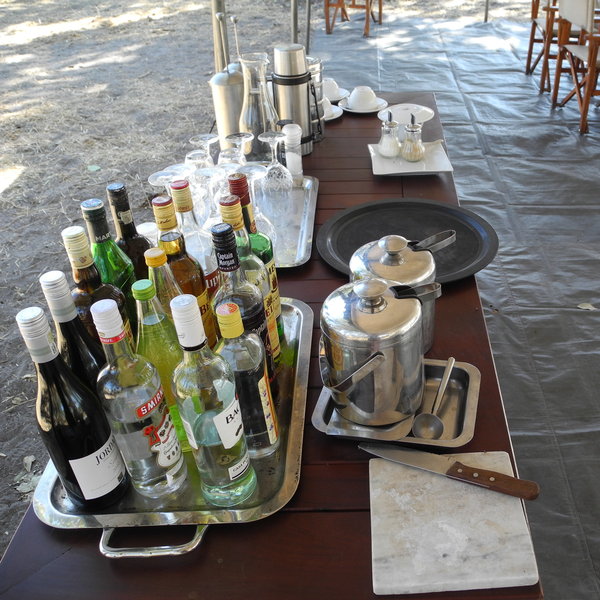
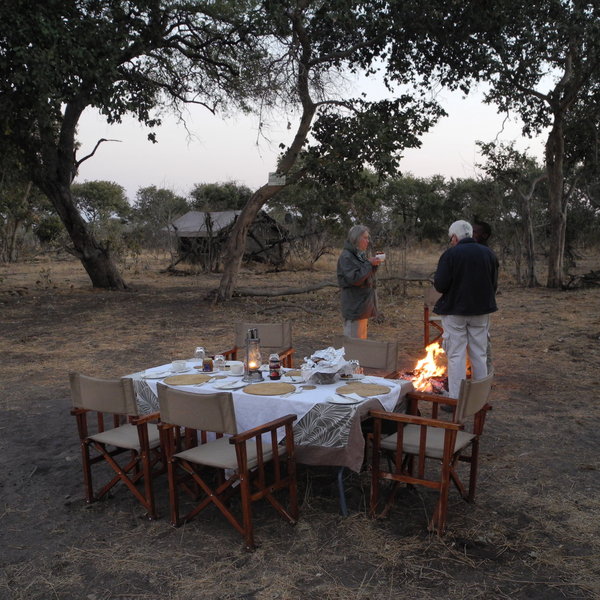
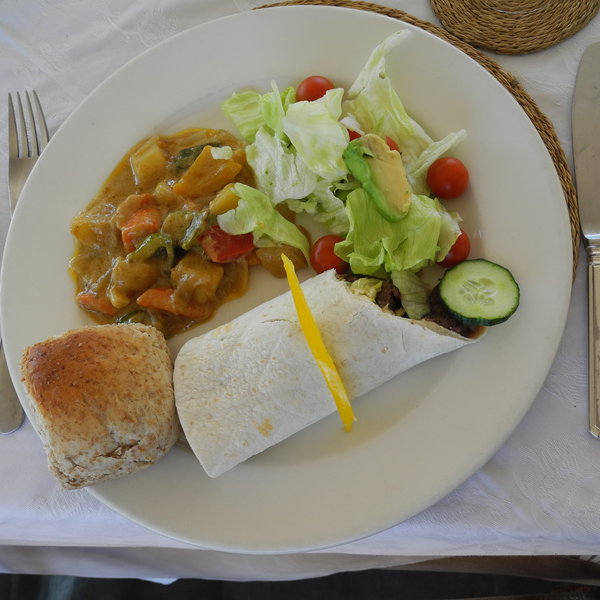
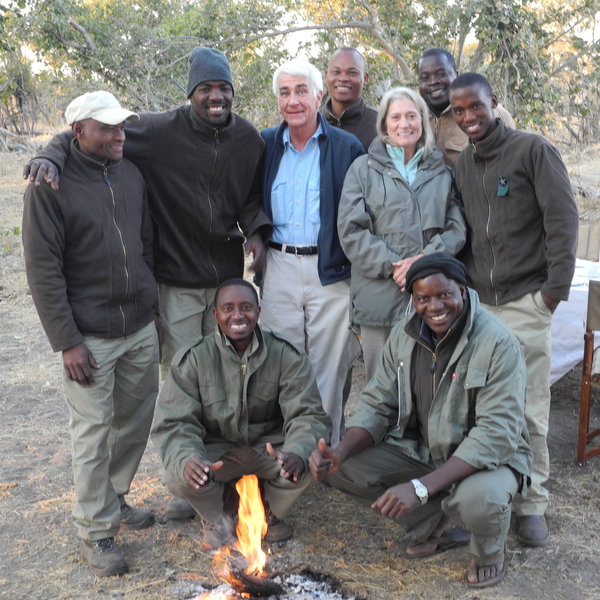
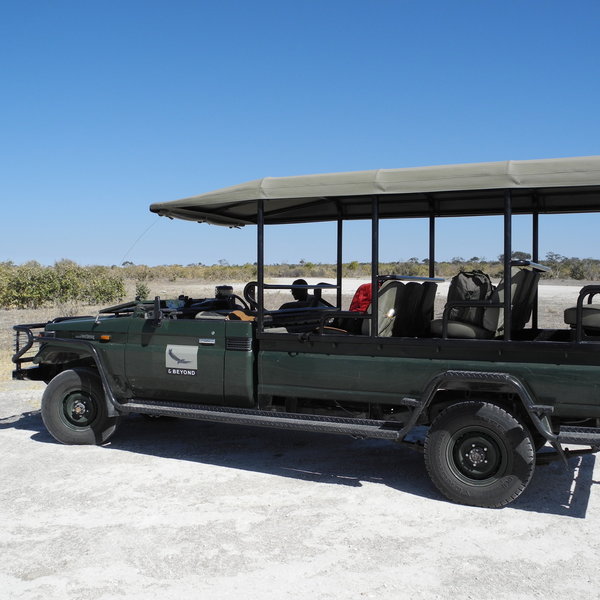
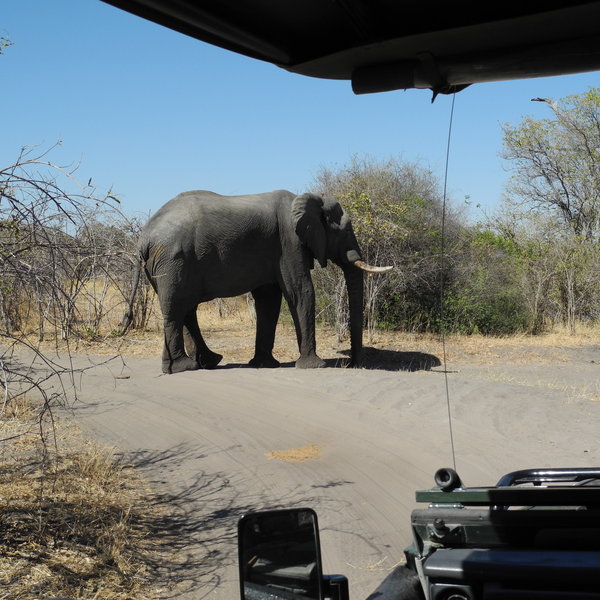
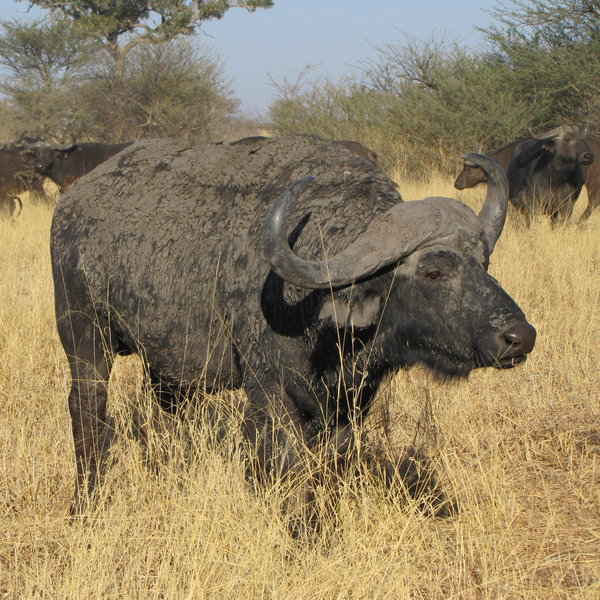
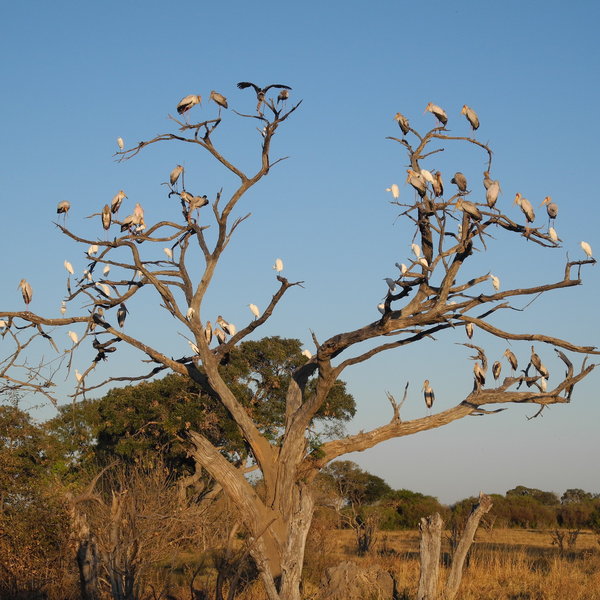
Expert Africa's gallery
When we travel we take lots of photos ourselves to give you a real and un-edited view of the safaris. See our 39 pictures of Savute Under Canvas to get the candid view.
View gallerySafaris visiting Savute Under Canvas
Just ideas, we'll always tailor-make a trip for you
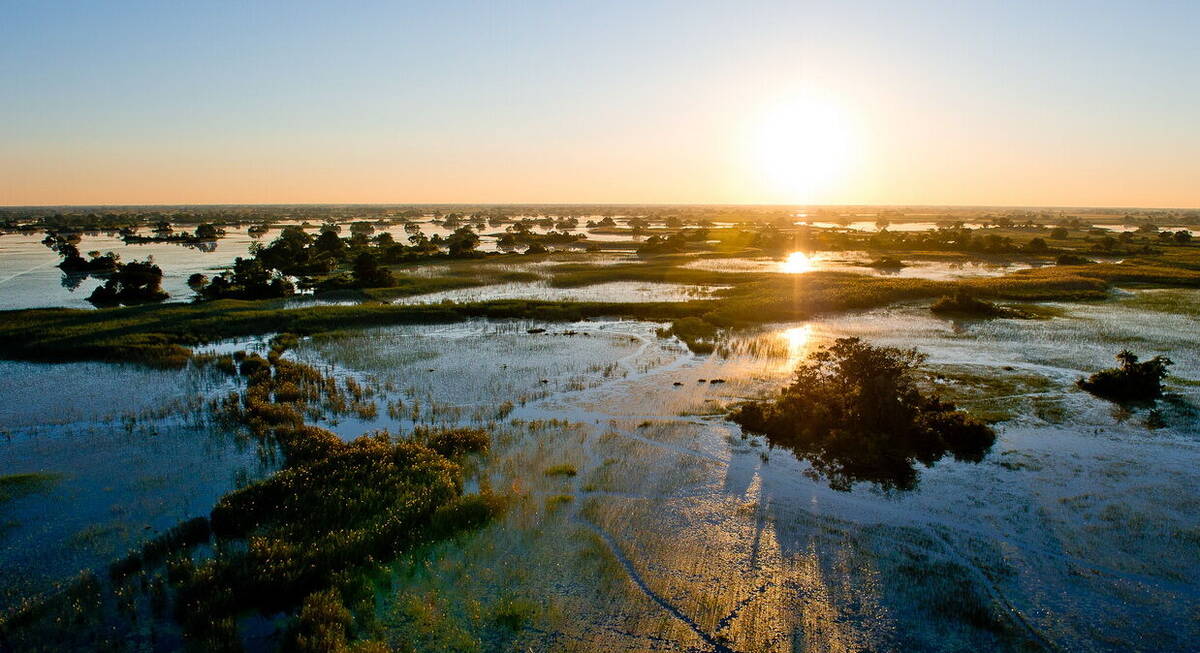
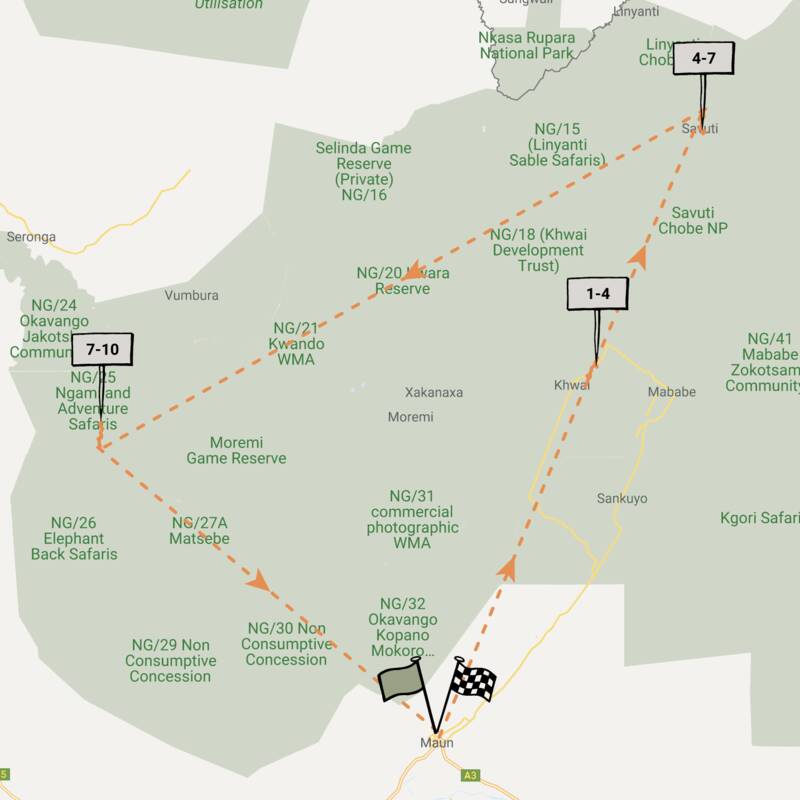
Steenbok Safari
9 days • 3 locations • 1 country
MAUN AIRPORT TO MAUN AIRPORT
A classic Botswana safari exploring the Moremi, Chobe National Park and Okavango Delta. Excellent wildlife viewing and a variety of activities from three of our favourite traditional tented camps.
Visiting Chobe, Okavango Delta and 1 other area
US$8,920 - US$13,480 per person
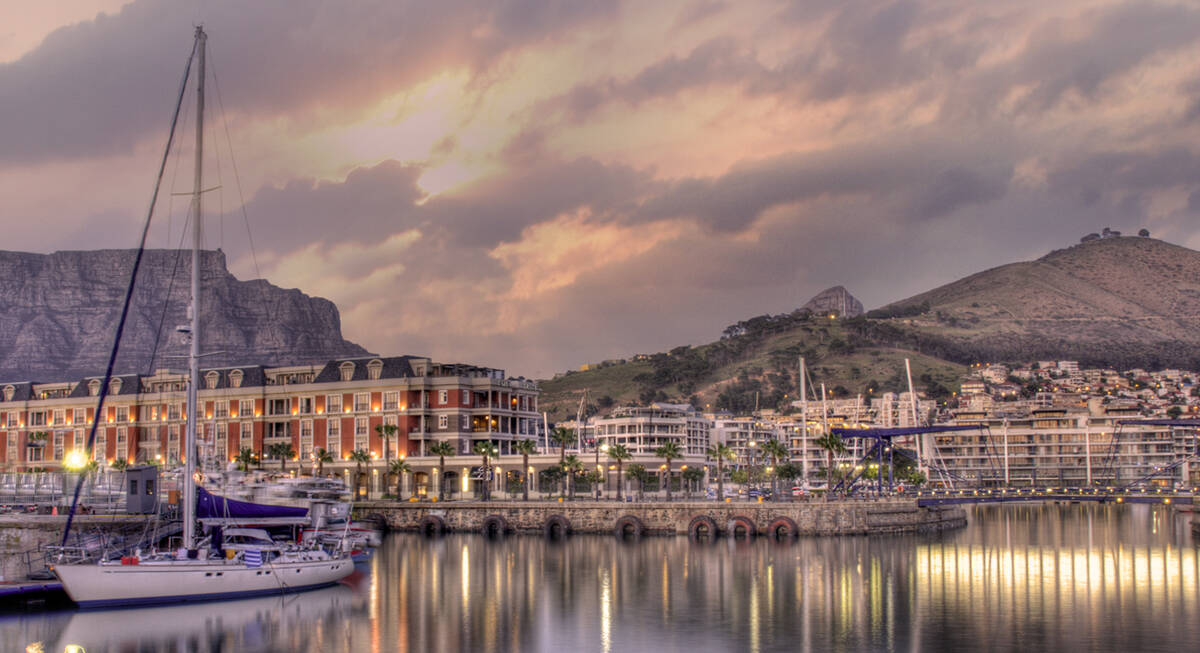
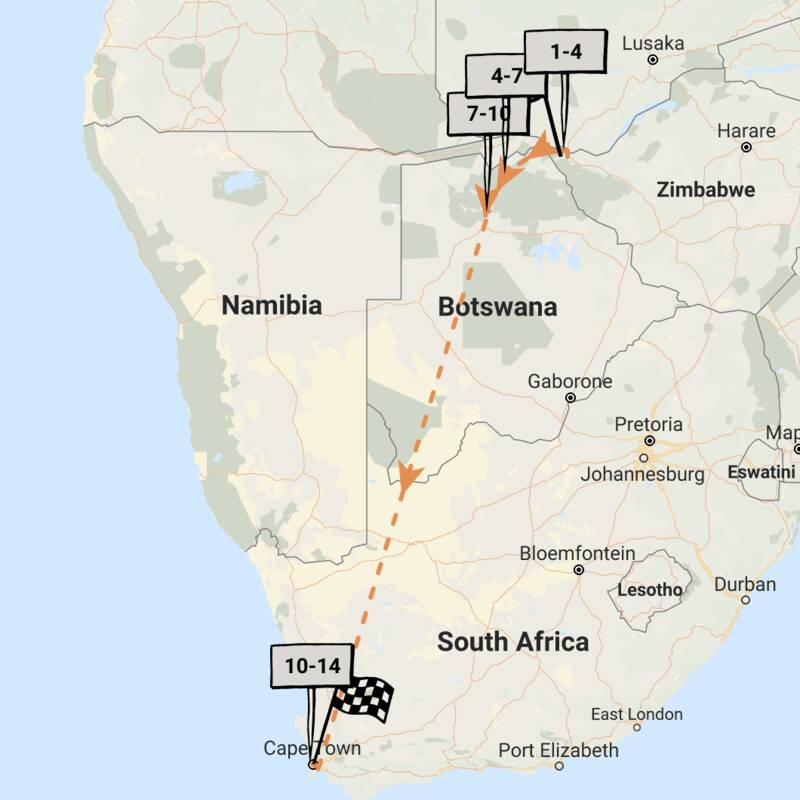
Leopard Safari
13 days • 4 locations • 3 country
VICTORIA FALLS AIRPORT TO CAPE TOWN AIRPORT
Victoria Falls, Botswana and Cape Town – a classic southern African itinerary combining luxury, wilderness, safari and culture. We can't think of a better way to spend two weeks.
Visiting Victoria Falls, Chobe and 2 other areas
US$15,260 - US$18,150 per person
Savute Under Canvas: Our full report
Savute Under Canvas offers an authentic mobile-camping experience, without forgoing many of the comforts ...
... of a semi-permanent tented camp. The camp utilises a number of different private campsites in the Savuti area of Botswana’s Chobe National Park, moving every five days in accordance with national-park regulations.
Tucked beneath acacia trees in the heart of the Savute region, Savute Under Canvas has five Meru-style tents, accommodating up to ten guests. These traditional walk-in safari tents are constructed of green canvas with mesh windows and a zippered entrance. A canvas flysheet gives added shade, and shelters the front of the tent, where a couple of camp chairs provide a place to relax and enjoy the surrounding bush.
Though the style is classic safari, with each tent furnished with twin beds (or a double), there’s a surprising amount of comfort here – you’ll find quality bedding (and some of the most comfortable beds we have slept in!), and linen dressing gowns and slippers on the canvas hanging rack to the back of the tent.
There are sisal mats on the floor, and bedside tables with battery-powered hurricane lamps. You'll also find a luggage trunk, a hanging rail and canvas hanging shelving with insect repellent and spray. There are no cooling fans, but kikois are provided, the ultimate ‘bush air conditioning in summer months! You won’t find plug points either, but guests can charge batteries in the safari vehicles.
Towards the back of the tent is to the open plan en-suite bathroom. Though there's no running water, there is a cubicle behind a canvas partition with a gravity-flush toilet, and a bucket shower that is filled with wonderfully hot water on your return to camp each evening, or on request. Atop a wooden washstand are a standing mirror, a hurricane lamp, water glasses, a metal handbasin and a metal jug, which is replenished with hot water for washing hands and brushing teeth. Towels, soap, shampoo, body wash and body lotion are provided.
Central to Savute Under Canvas is a simple open-sided mess tent with dining tables and chairs, a tea and coffee station and a bar table with a selection of standard spirits. ‘Back of house’ the team have a selection of wildlife reference books, just ask and they’ll happily bring out for you to discuss the day’s sightings.
Most evening meals are served under the stars, weather permitting, and a nearby campfire provides a social spot for pre- or post-dinner drinks.
We have always found the guiding at Savute Under Canvas to be of an exceptionally high standard. Activities here focus on morning and afternoon game drives, between sunrise and sunset. National-park regulations do not permit night drives, guided walks or off-roading, but we did enjoy a short walk up Tsonxhwaa Hill to view ancient San Bushman rock paintings, a real highlight. (Do note that this is only an option in the dry season, when the grasses are shorter and the path fully clear.)
Game drives are conducted in open-sided 4WD vehicles, and cover the network of sandy roads that crisscross the Savute corner of Chobe National Park, with regular stops for wildlife viewing along the way. Each vehicles has a canvas roof for shade and three rows of three seats, with no more than six guests per vehicle so that everyone gets a clear outer view. Note, however, that the national park is shared with other mobile camp and lodge vehicles, as well as self-drivers, so you can expect to encounter a number of other vehicles, particularly at significant sightings and during peak season.
The wildlife in this region is varied, with game viewing reaching its peak in the dry season, from June to October. During our game drives in this area, we have been treated to sightings of two very active packs of wild dog, a large pride of lions (including a massive male – one of the biggest we've ever seen!), giraffe, leopard, tsessebe, and elephant. Indeed, the area is well-known for its elephant population, particularly during the dry season when large herds can be seen dotted across the expansive Savuti Marshes, along with plenty of plains game. On our most recent trip we ventured further afield to the edges of the marshland, and were rewarded with a stunning daytime sighting of a very relaxed aardwolf. Lion populations are renowned here, though the recent appearance of some new large males has unsettled the resident prides, so sightings have been a little less reliable than in previous years.
Around April and May a small zebra and wildebeest migration passes through here, and during the wet season, from December to March, there's a notable congregation of birdlife around the Savuti Marsh area, including flocks of storks, spoonbills and pink-backed pelicans.
Savute Under Canvas also has a sister camp, Chobe Under Canvas, which operates on the same lines along the Chobe Riverfront – and the two combine well, though one or the other in combination with a camp in one of the private reserves of the Okavango Delta allows you to mix the rustic vibes of camping, with a more luxurious option and the ability to do night drives and guided walking safaris.
Activities
4WD Safari
Birdwatching
Helicopter
Private activities
Families & children
- Attitude towards children
- Children aged 12 years and over are welcome at Savute Under Canvas.
- Property’s age restrictions
- No children under 12
- Special activities & services
- None
- Equipment
- No equipment for children is provided.
- Generally recommended for children
- We would recommend Savute Under Canvas only for older children aged around 16 years or more, who have a keen interest in wildlife. As the camp has no swimming pool or family tent and it’s open to big game, we don’t feel it is suitable for younger children.
- Notes
- Due to the presence of potentially dangerous wildlife around this unfenced camp, children must be under the supervision of a parent or guardian at all times.
Food & drink
- Usual board basis
- Full Board & Activities
- Food quality
- The food at Savute Under Canvas was very good during our last stay, with everything prepared in the camp's basic mobile kitchen and cooked over an open fire. Special dietary requirements need to be advised in advance as supplies are driven or flown in from Maun or Kasane.
A light breakfast of cereals, fruit, yoghurt, toast and spreads, along with tea and coffee, is served prior to the early-morning game drive. Eggs, bacon, sausage and tomatoes are cooked up over the fire, to order.
For lunch on our most recent visit we enjoyed beef and vegetable skewers, with an array of salads, including mixed grains, a leafy green salad, and a broccoli and feta salad, along with freshly baked bread and a cheeseboard, with fruit or chocolate mousse to finish.
Afternoon tea was a delicious ginger and sultana cake (beautifully baked in a firepit!) and fresh fruit, served with iced tea.
For dinner we enjoyed an exceptionally tasty cauliflower cheese soup, for a starter, which was served with fresh, warm bread rolls. Our main course one night was a more traditional meal: hearty oxtail stew, with polenta and chakalaka. The next night, slightly lighter far, with roasted chicken, saffron spiced rice and a mixed vegetable salad.
Desserts were varied, with choices like poached pears in a red wine sauce, with minted yoghurt, chocolate brownies with cream, apple fritters and syrup, or a fresh fruit platter. - Dining style
- Group Meals
- Dining locations
- Indoor and Outdoor Dining
- Drinks included
- All beverages stocked in camp (bottled water, soft drinks, local beers, spirits and a limited selection of generally South African wines) are included. Champagne and premium or imported wines and spirits cost extra and must be requested in advance.
Our travellers’ wildlife sightings from Savute Under Canvas
Since mid-2018, many of our travellers who stayed at Savute Under Canvas have kindly recorded their wildlife sightings and shared them with us. The results are below. Click an animal to see more, and here to see more on our methodology.

100% success

100% success

90% success

89% success

67% success

44% success

44% success

38% success

38% success

38% success

33% success

33% success

25% success

20% success

17% success

14% success

14% success

0% success
Getting there
- Location
- Chobe National Park, Botswana
- Ideal length of stay
- We recommend a stay of two nights at Savute Under Canvas, although you might consider three nights during the dry season when game densities are at the highest. The camp combines particularly well with its sister camp, Chobe Under Canvas, and also often forms part of a trip with Sandibe Safari Lodge, Nxabega Safari Camp or Xaranna Okavango Lodge – which are all owned by the same company, &Beyond.
- Directions
- Savute Under Canvas is reached by light aircraft into Savuti airstrip: roughly a 50-minute flight from Maun or 35 minutes from Kasane. It’s then a drive of around 30 minutes to an hour, depending on the camp’s location at the time and wildlife sightings on the way.
- Accessible by
- Fly-and-Transfer
Special interests
- Birdwatching safaris
- The Savuti Marshes are renowned for birdlife densities, particularly from mid-December to March, when flocks of yellow-billed storks, African spoonbills and pink-backed pelicans make this a great time for birdwatching in Botswana.
- See ideas for Birdwatching safaris in Botswana
Communications
- Power supply notes
- Hurricane lamps run from solar batteries. Guests may use the plugs in the 4WD safari vehicles to charge cameras, laptops, or tablets from a 220-volt inverter system; just bring your own USB charger or three round-pin adaptor (the plugs are like those in South Africa or the old-style UK ones).
- Communications
- Guests should consider themselves out of contact while at Savute Under Canvas.There is no internet or cellphone reception, although the camp team have a satellite phone to contact Maun in an emergency.
- TV & radio
- No
- Water supply
- Transported in
- Water supply notes
- Water is collected from the National Park gate office; about 30 to 60 minutes drive away.
Health & safety
- Malarial protection recommended
- Yes
- Medical care
- A first-aid kit is kept in camp and in each vehicle, and the camp manager and guides are first-aid trained. In an emergency, medical evacuation to Maun can be arranged. Please note that it is only possible to fly out during daylight hours.
- Dangerous animals
- High Risk
- Security measures
- Savute Under Canvas is unfenced within a big-game area, so guests are escorted to their tents after dark. Air horns are provided in the tents to attract attention in case of emergency.
- Fire safety
- Fire extinguishers are located outside each tent, and also in the safari vehicles. Park regulations limit the size of the campfire.
Useful info
- Disabled access
- Not Possible
- Laundry facilities
- Laundry is included on request, though during our last visit the water levels were low and the laundry service wasn’t available.
If it is being offered, clothes are hand washed and air dried, and they do not wash undergarments. Washing powder is provided on request for this purpose. - Money
- There are no safes in the tents, and currency exchange is not possible.
- Accepted payment on location
- Everything is included in your stay at Savute Under Canvas, other than premium or imported beverages, which need to be ordered in advance. Hence no payments are required at the camp and there are no credit-card facilities. Tips can be made in US dollars, Botswana pula or South African rand.
Plan and book your trip with Expert Africa
All of our trips are tailor-made, so we'll always adapt them to suit you. Talk to an Expert and let us plan and arrange your perfect trip.

Talk to an Expert
Call or email us now! We’ll match you with the Specialist in our team who is best suited to help you. Then together we can start planning your trip.

Set up your itinerary
Based on our experience and your ideas, your specialist will create a detailed, costed itinerary. We’ll refine it together, until we have a trip that you’re perfectly happy with.

Prepare for your trip
The same Specialist will make the seamless arrangements for your trip, send you detailed travel documents, and be available to answer any questions before you depart.

Travel with peace of mind
After you set off, you’ll be cared for by our partners in Africa, most of whom have worked with Expert Africa for decades. And if you ever need us urgently, we’re available 24/7.

When you return
We love to learn about your trip, and so will always be grateful if you’ve the time to give feedback to your Specialist when you return.
Savute Under Canvas's location
Look closer at the environment and surroundings of Savute Under Canvas.
Excursions from Savute Under Canvas
Optional extra day-trips and excursions possible whilst you're staying at Savute Under Canvas. Talk to us: these are usually best arranged before you go.
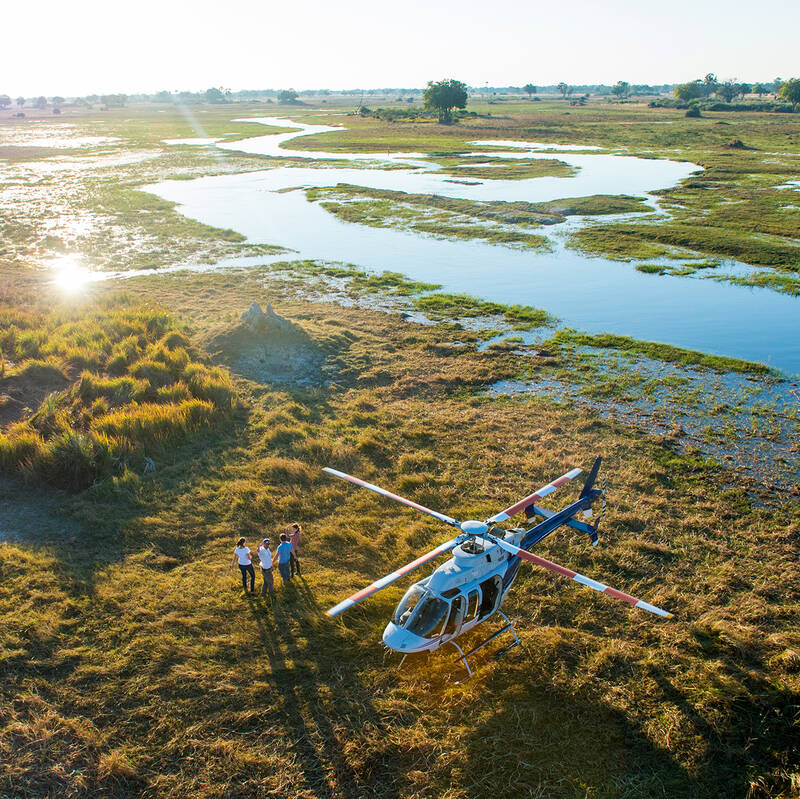
Helicopter Flight - Botswana
Various: from 30 minutes to half a day.
Low-flying, agile and offering superb views, helicopters are an ideal way to move around the Okavango Delta.You can use them instead of fixed-wing inter-lodge transfers or as an addition to other wildlife watching activities, and of course, helicopters can hover to allow that perfect pic, whereas fixed-wings can’t.
More about Helicopter FlightOther lodges in Chobe National Park
Alternative places to stay in this same area.
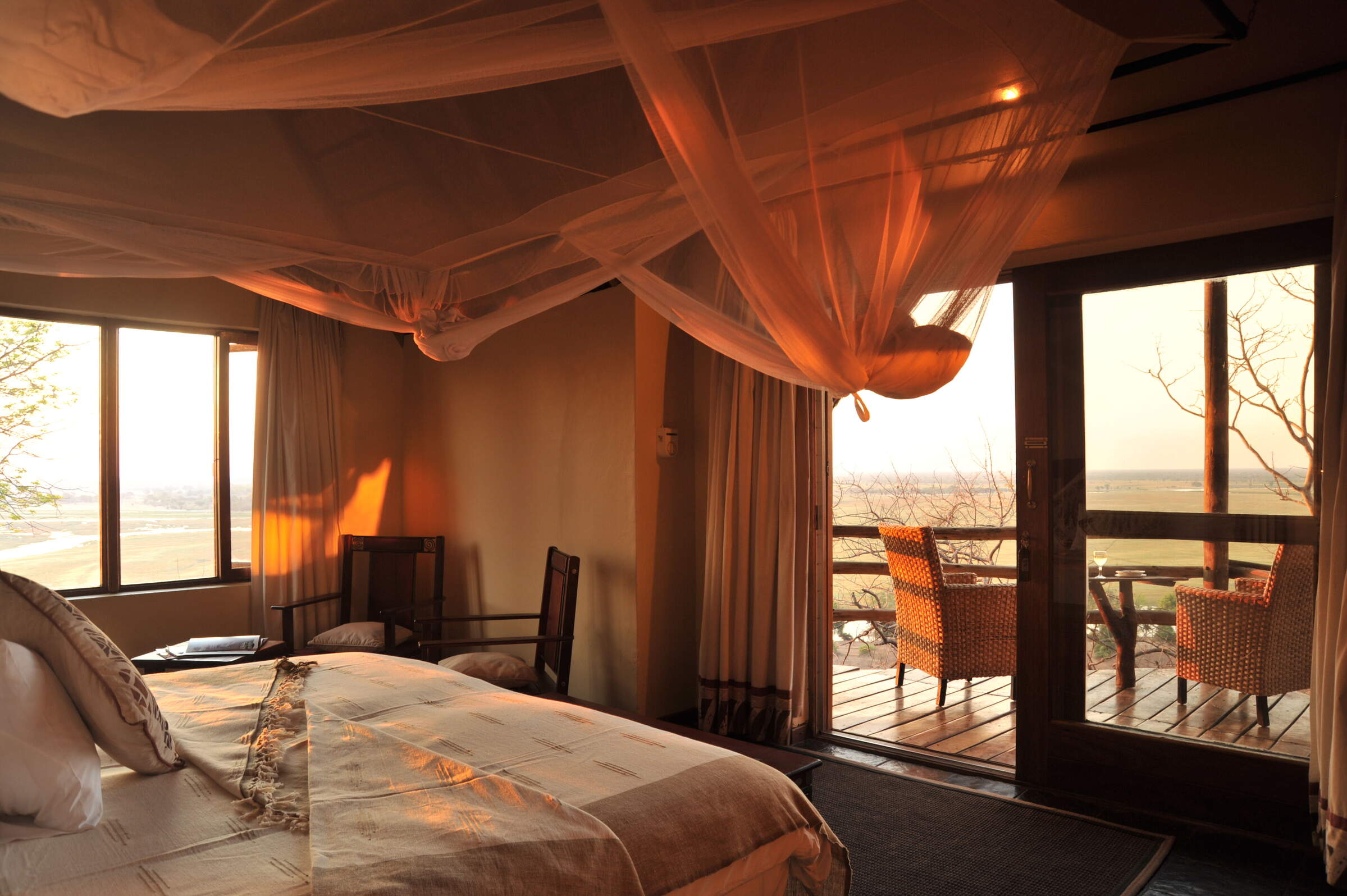
Muchenje Safari Lodge
One of our favourites in the area, Muchenje is a small, welcoming lodge at the quieter, western end of the Chobe Riverfront.
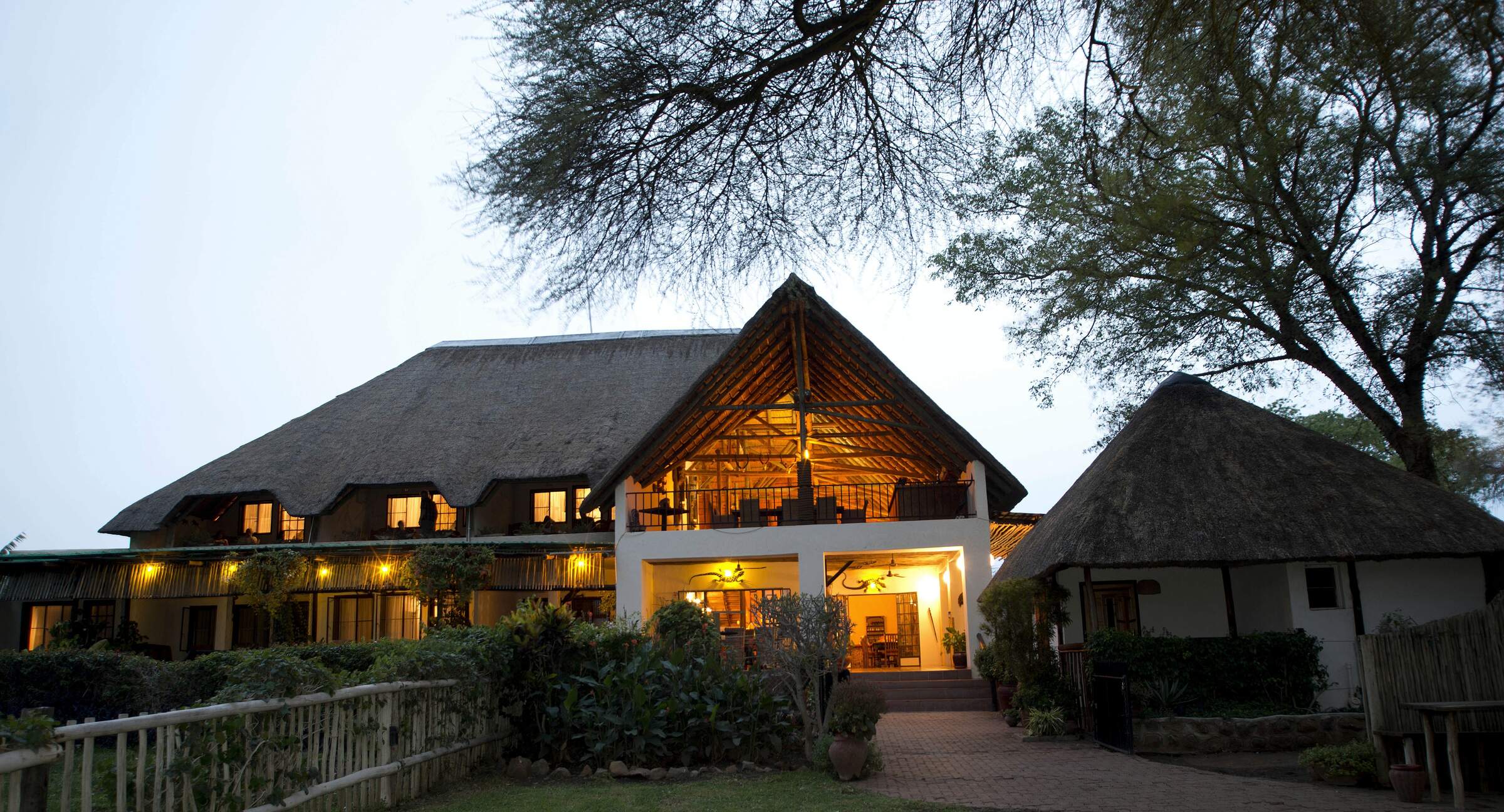
Chobe River Lodge
Overlooking the Chobe River, the intimate Chobe River Lodge is a haven of tranquillity away from the bustle of Kasane.
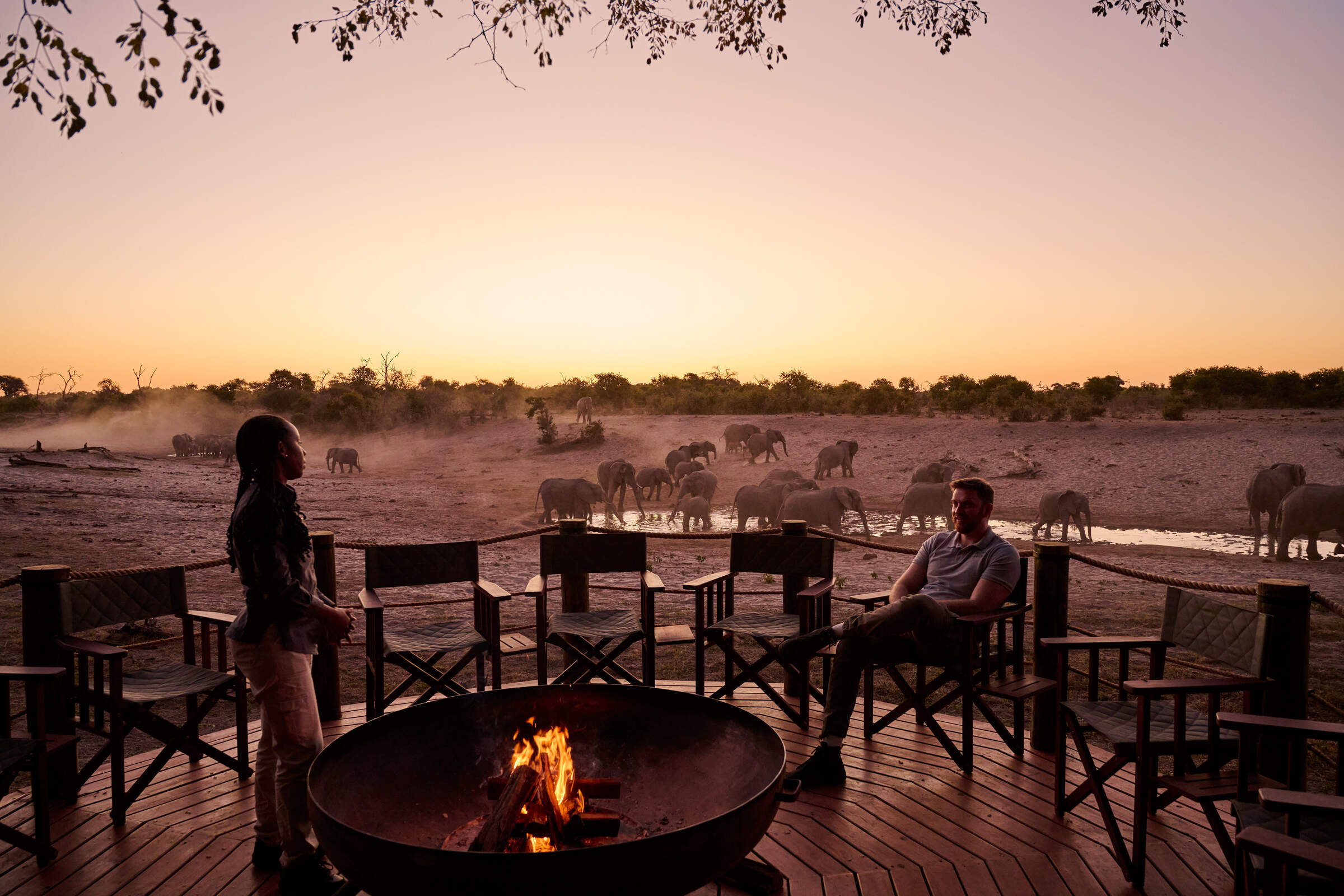
Savute Safari Lodge
Savute Safari Lodge sits on the banks of the Savuti Channel within Chobe National Park, and offers access to excellent game viewing, especially during the dry season.
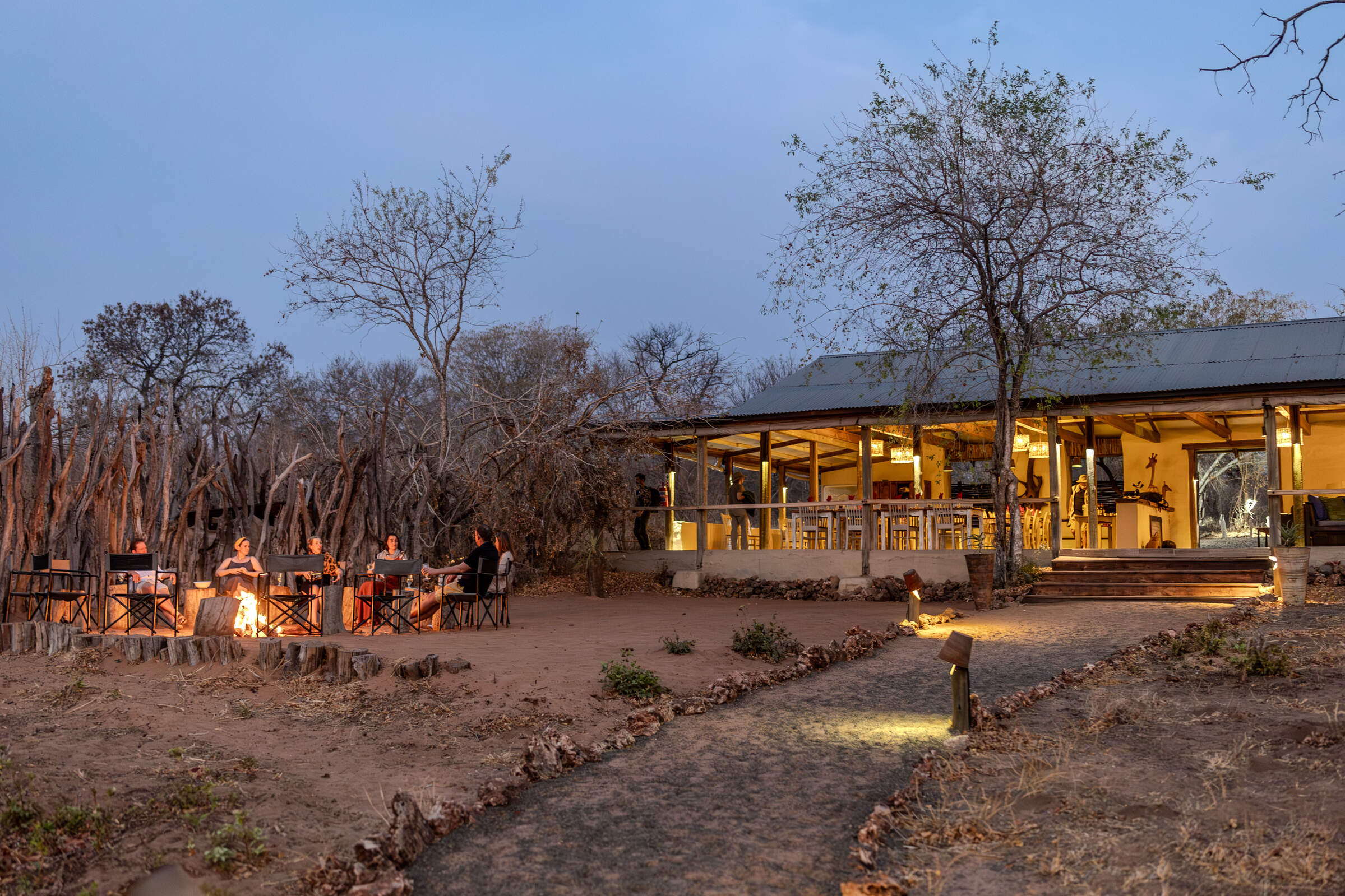
Chobe Elephant Camp
Located in one of our favorite areas of Chobe National Park, Chobe Elephant Camp is a simple but well-appointed camp with a strong bush feel.
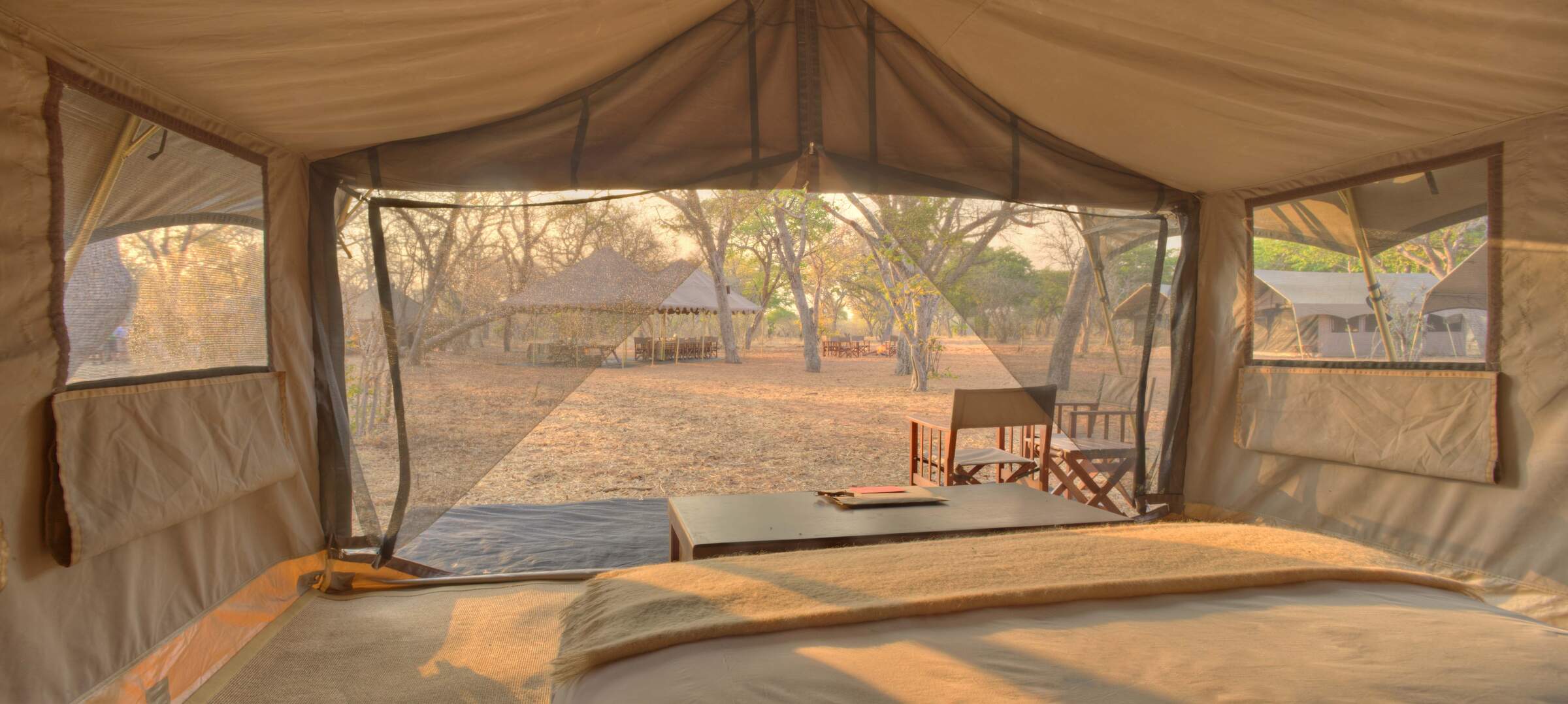
Chobe Under Canvas
This is a typical location for Chobe under Canvas, a small, semi-permanent camp in the Chobe Riverfront area that offers good value for money and high standards of care.
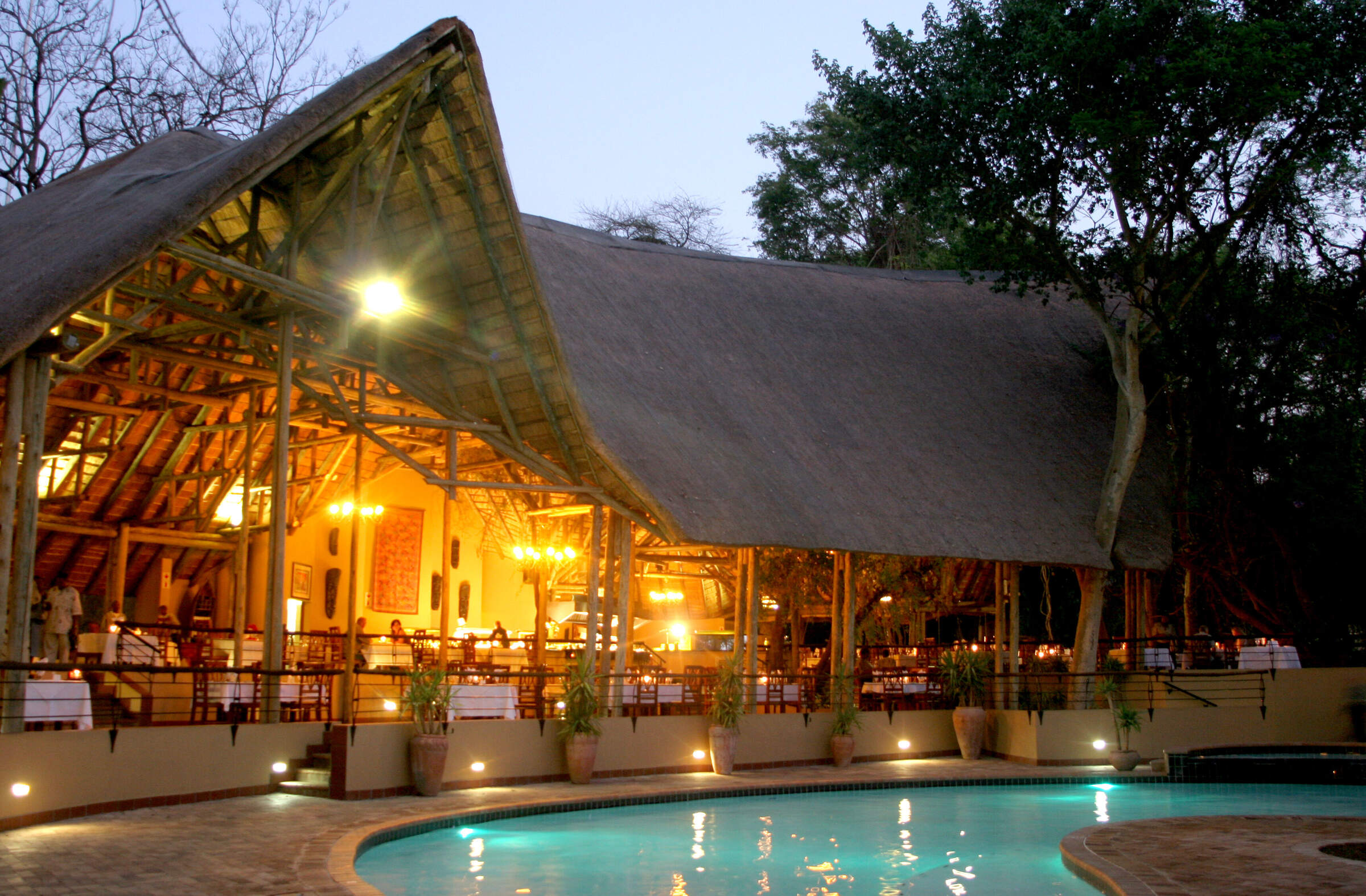
Chobe Safari Lodge
Chobe Safari Lodge is a good value, hotel-style lodge in the heart of Kasane offering game drives, boat cruises and fishing trips.
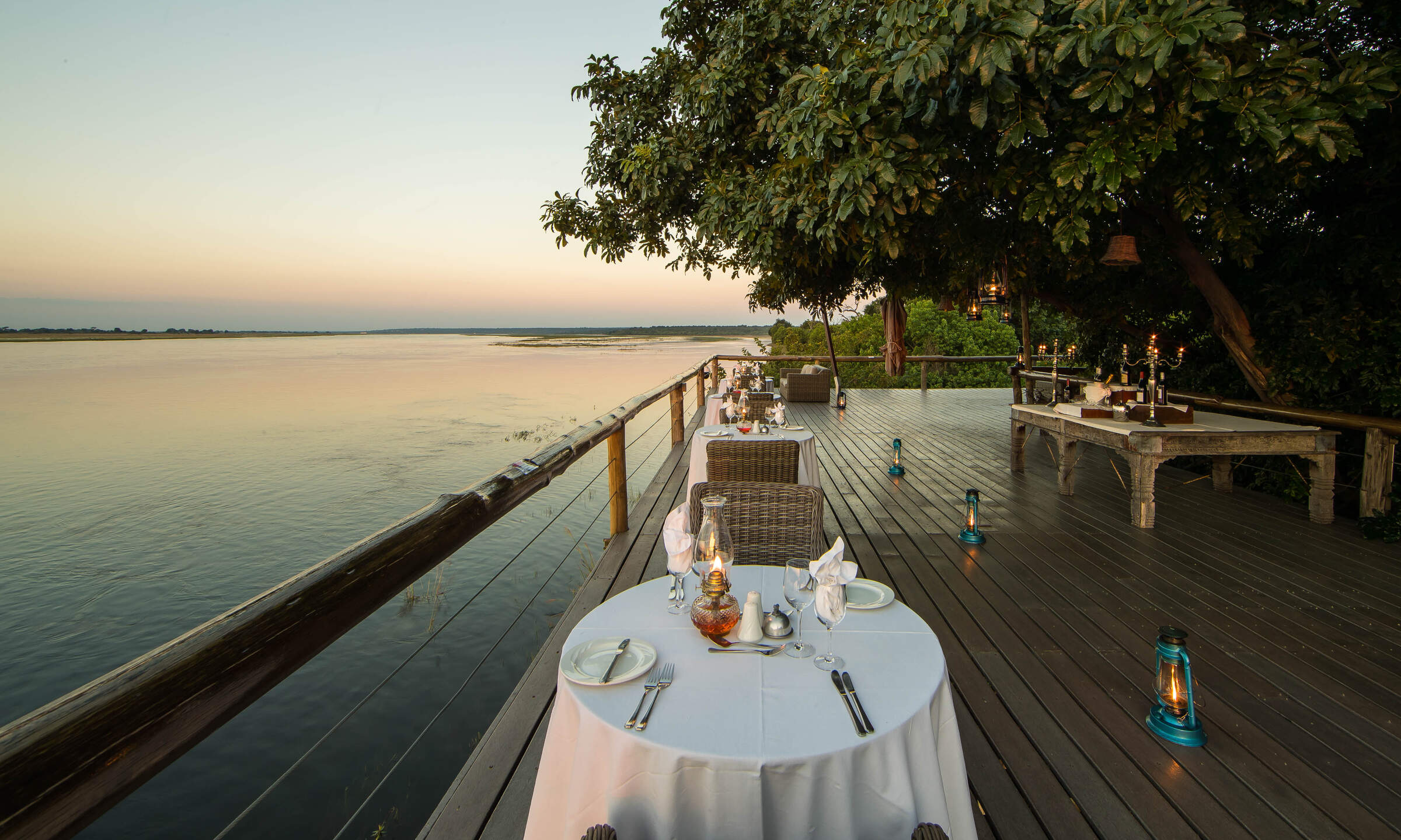
Chobe Game Lodge
Chobe Game Lodge occupies an enviable riverfront location within Chobe National Park and boasts well-earned 'eco' credentials, as well as an excellent all-female guiding team.
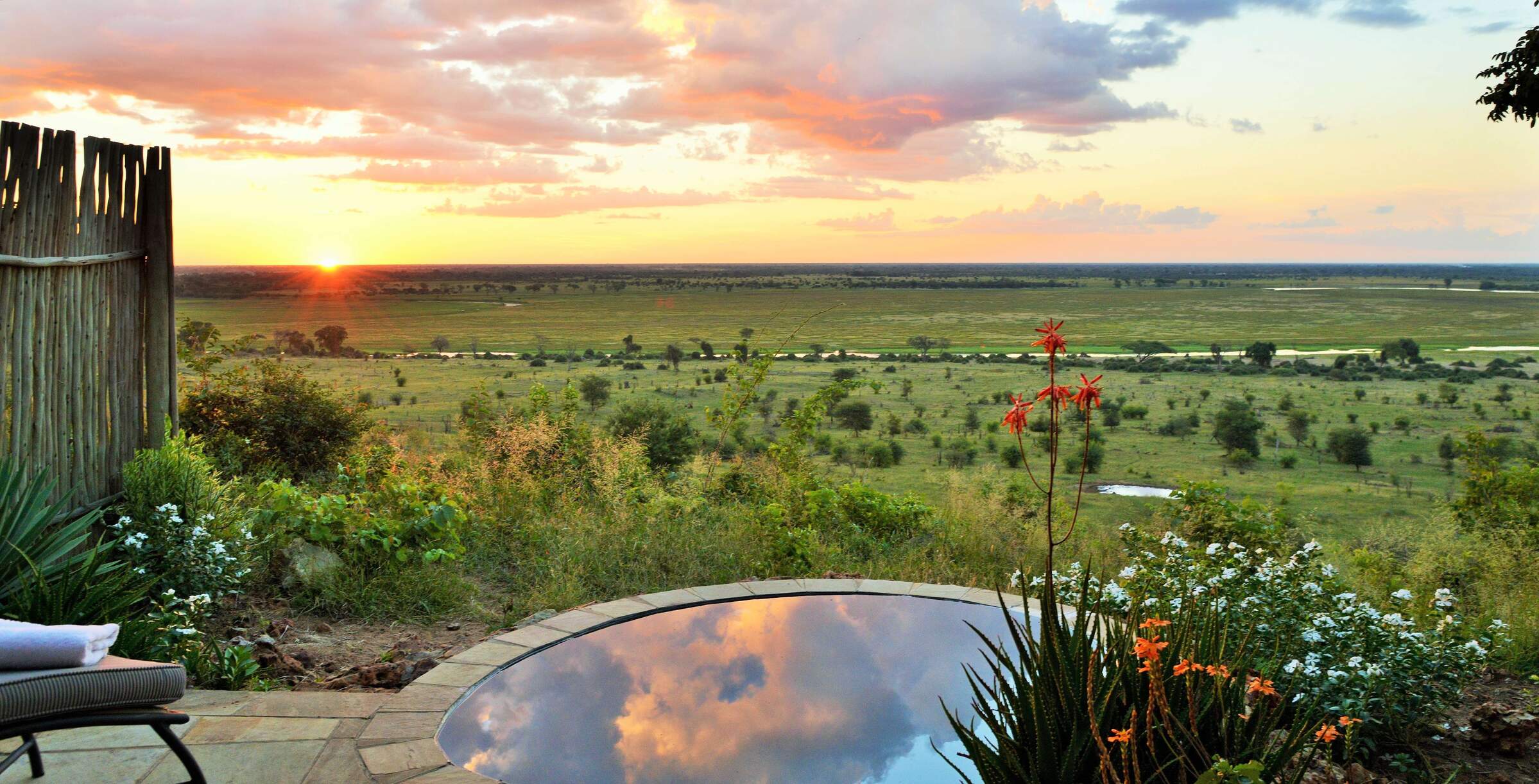
Ngoma Safari Lodge
With sweeping views across the floodplains of the Chobe River, Ngoma offers superb food and flexible safari activities.
Closed for refurbishment 5 Jan - 28 March 2026
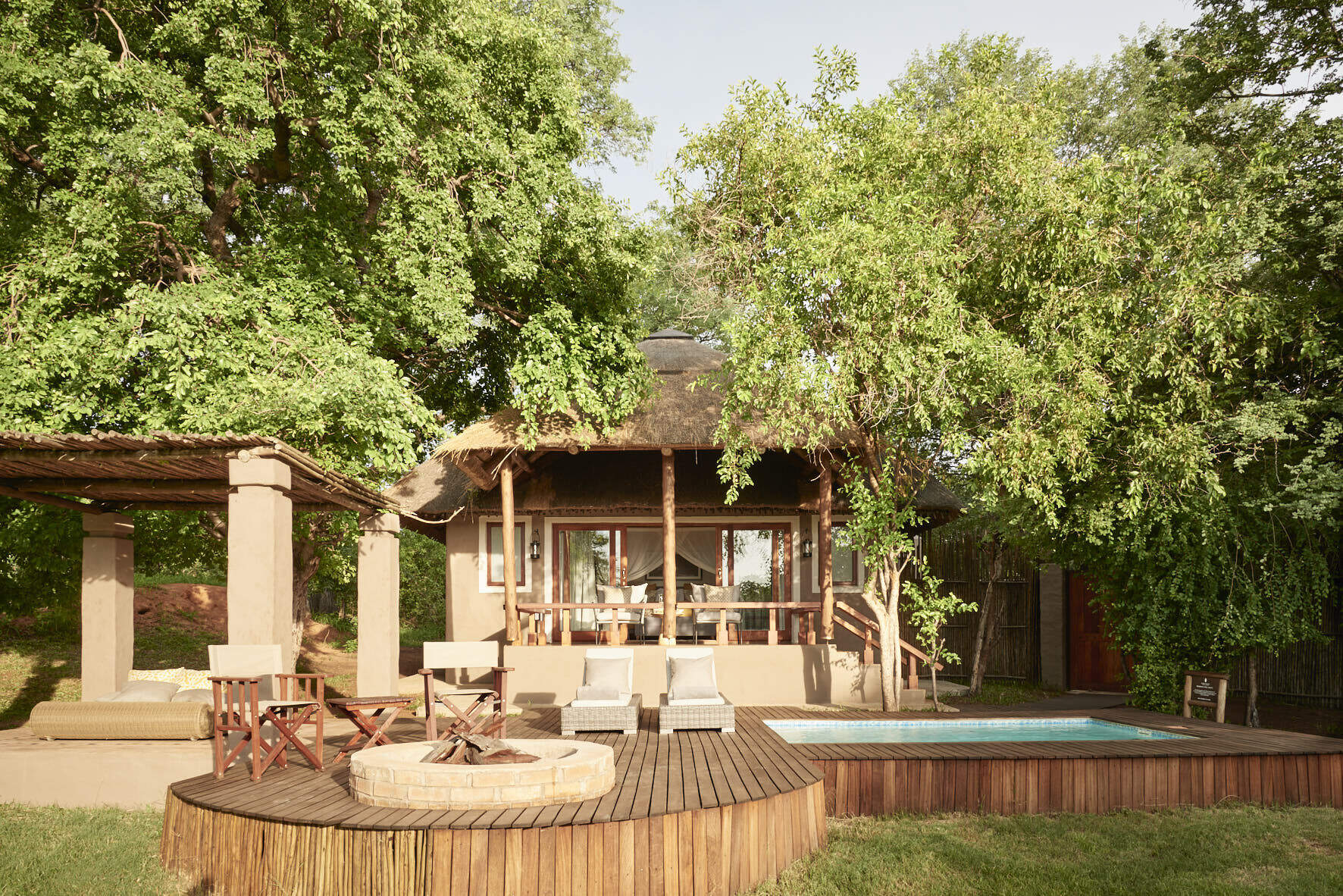
Chobe Chilwero
On the periphery of Chobe National Park, Chobe Chilwero offers luxurious surroundings and excellent food, which complement superb game viewing on game drives and boat trips.
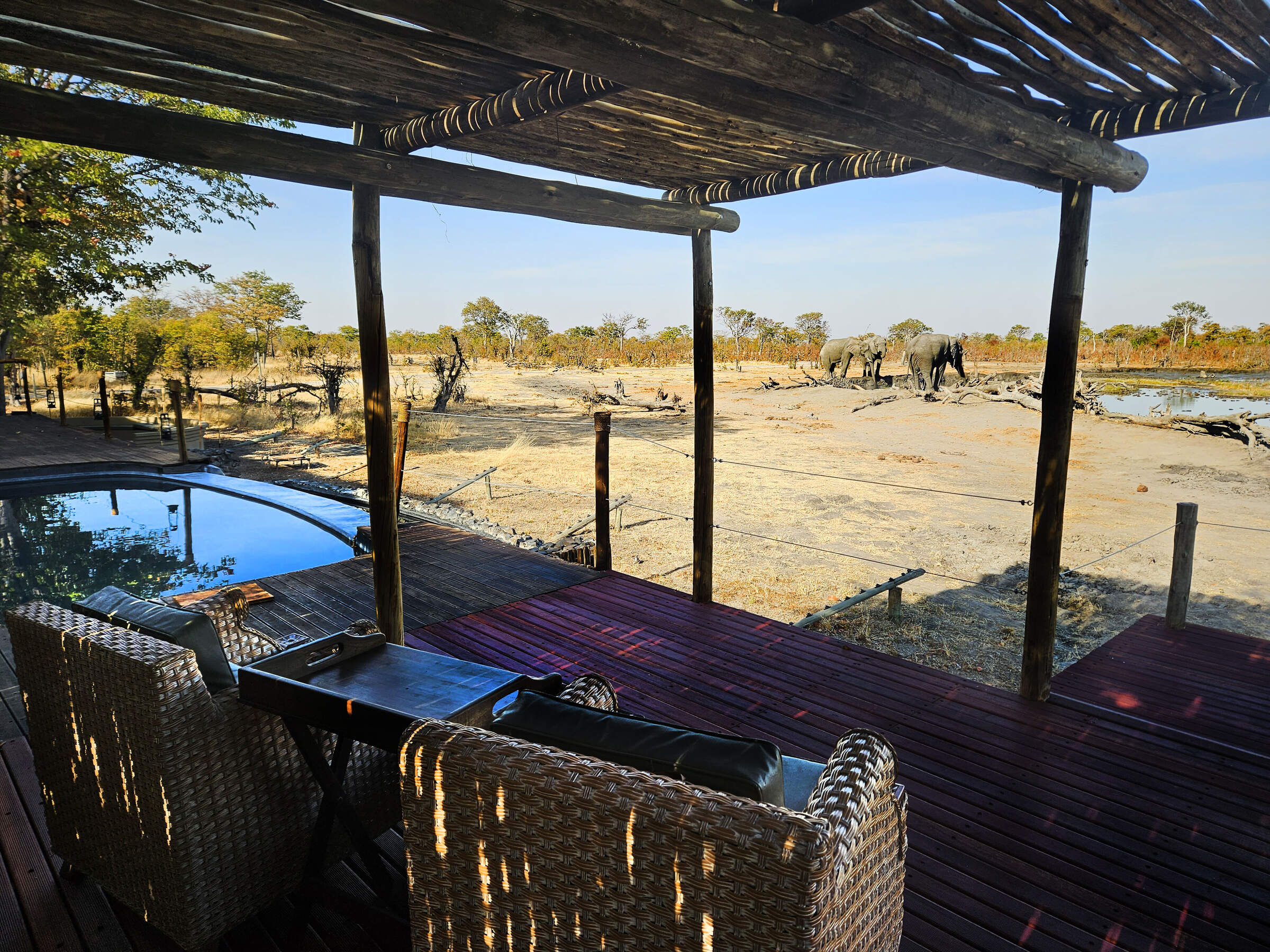
Camp Kuzuma
Camp Kuzuma sits in the Kazuma Forest Reserve and is an excellent place to see elephant in particular. Away from the busier riverfront area of Chobe National Park this camp offers a luxurious base form which to explore this less visited region of northern Botswana.
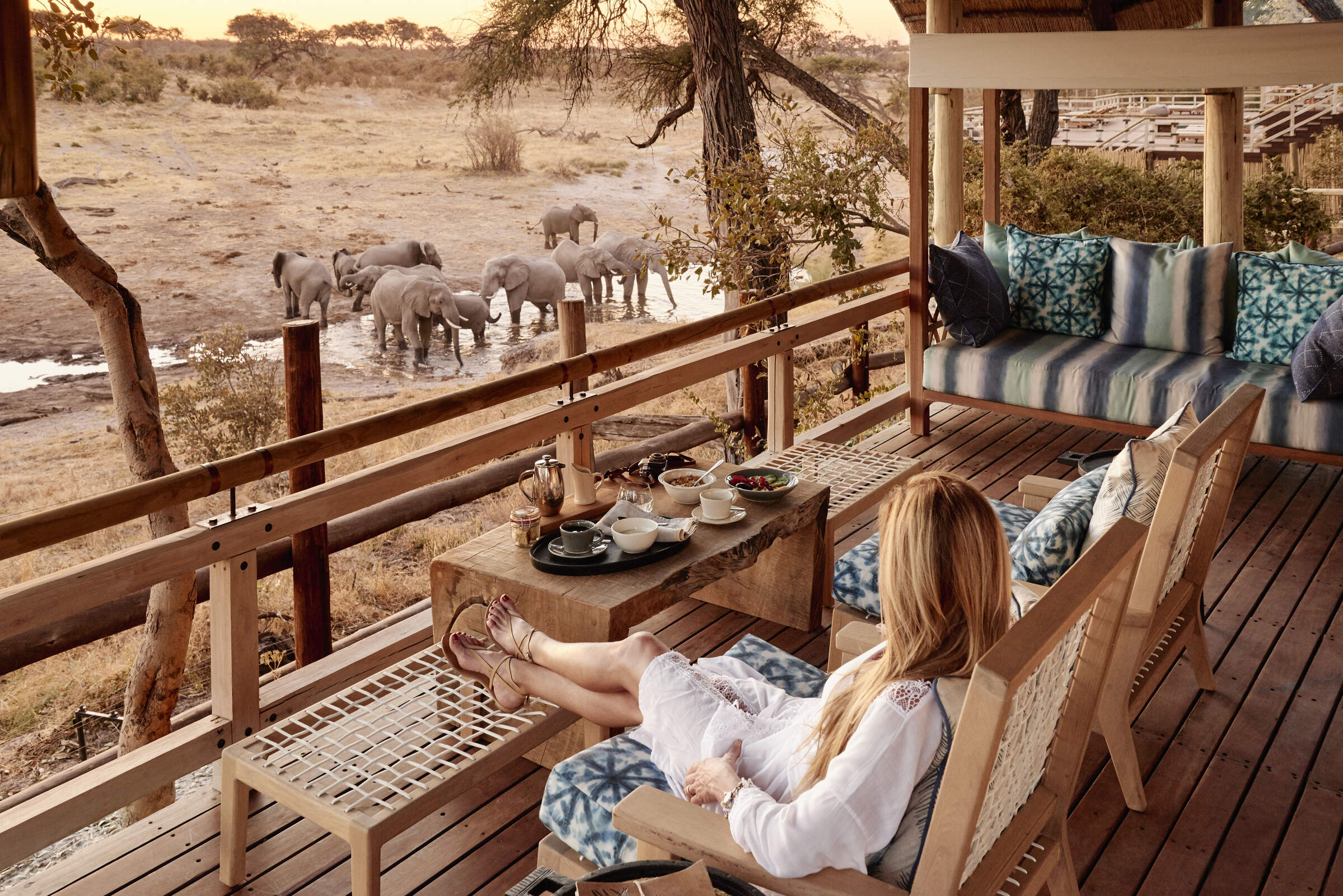
Savute Elephant Lodge
Savute Elephant Lodge is a luxurious camp on the banks of the now flowing Savuti Channel. This is a classic big-game area, although its location within Chobe National Park does limit the activities which are possible here.
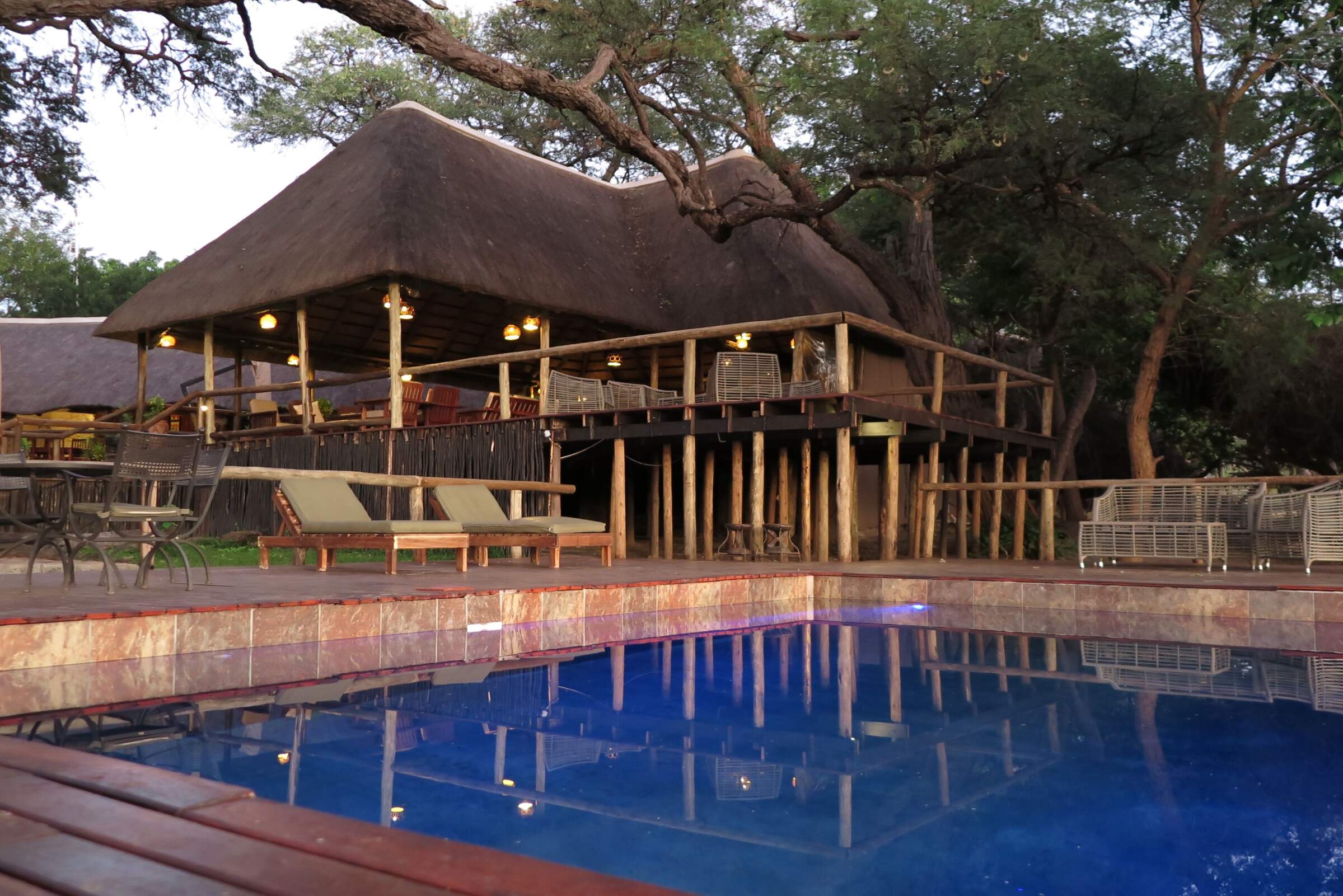
Elephant Valley Lodge
Elephant Valley Lodge is a lovely camp in a beautiful setting – sit in its hide and watch the wildlife come to drink at the waterhole. Activities focus on boating and drives in Chobe which - although very busy, and a long drive from the lodge – is very rich in wildlife.
When to go to Chobe National Park
Our month by month guide: What it's like to visit Savute Under Canvas in Chobe National Park
Jan
Feb
Mar
Apr
May
Jun
Jul
Aug
Sep
Oct
Nov
Dec
Chobe National Park in January
January marks the peak of the rainy season in Chobe National Park. Evening rains are typically brief but heavy, often accompanied by thunderstorms. While temperatures remain high, they are slightly cooler compared to earlier months. Wildlife tends to be more dispersed, making it harder to spot animals. Big game densities near the Chobe Riverfront are relatively low, but some resident species, like giraffes, are accustomed to vehicles and can appear so relaxed that they seem almost tame.
The Savuti Marsh becomes lush and green, attracting herbivores. Migratory birds abound throughout the park, with the Linyanti Marsh being particularly rich in birdlife during this period. January is an excellent time for visitors interested in lush landscapes and diverse birdlife. Lower rates at many lodges make this a good time to visit on a more moderate budget.
- Warm temperatures with occasional thunderstorms
- Birdlife at its most spectacular in Chobe
- Big game dispersed across the park
- Seek most wildlife away from the river
- Good availability and rates in Chobe’s lodges and camps
Our view
A good time to visit, with pros & cons
Weather in January
Chobe National Park in February
February in Chobe National Park is similar to January, with heavy rains most days, often towards evening. The landscape is green and alive, with insects and smaller animals more easily seen. Many birds and animals are raising their young, especially in the Linyanti and Savuti areas, making for lovely family group sightings. The Chobe River swells, creating a spectacular landscape and attracting diverse wildlife. However, the rains create pools and waterholes in the bush, which combined with thicker vegetation makes it harder to spot larger animals.
The Chobe Riverfront area still offers a good wildlife experience as although much big game has moved away, the animals that remain are often more relaxed. Boat cruises on the Chobe River provide excellent opportunities to observe wildlife from a different perspective. Visitor numbers remain low, with good rates and more availability in camps and lodges.
- Warm with occasional thunderstorms in Chobe
- Vegetation running riot; smaller wildlife thriving
- Many animals with young in the park
- Big game dispersed throughout Chobe
- Low visitor numbers, good camp availability
Our view
This is not a great time to visit
Weather in February
Chobe National Park in March
March typically marks the end of the main rainy season in Chobe National Park, with showers gradually tapering off. Many days are characterised by clear skies, intense sunshine, and rising temperatures. Short afternoon thunderstorms may still occur, while the park's landscape remains lush and vibrant. During this time, many birds and animals complete the process of raising their young. The Savuti Marsh area becomes particularly fascinating as predators exploit the vulnerability of the young and weaker prey.
The Chobe River levels start to stabilise, offering excellent boat safari opportunities. March can also be a good time to explore the Linyanti area, where many animals congregate as other water sources begin to dry up. With fewer visitors in most areas, rates are still be relatively low at lodges and safari camps.
- Variable weather, rains tailing off in Chobe
- Occasional small thunderstorms in the park
- Many animals finish raising young in Chobe
- Birdlife still spectacular along Chobe River
- Few tourists, often lower rates in lodges
Our view
A good time to visit, with pros & cons
Weather in March
Chobe National Park in April
During April, rains in Chobe National Park have usually stopped, though there may still be the odd afternoon downpour. This results in clear skies and a lovely green, lush landscape. Night-time temperatures start to drop, and are especially noticeable in the Savuti area. The Chobe Riverfront begins to flourish at this time, with the numbers of elephants and other wildlife gradually increasing along the river.
The Savuti region is a particular favourite during this time, with good predator-prey interactions on display. April marks the beginning of the shoulder season for many camps, so rates are on the rise but still relatively moderate. This is an excellent time for photographic safaris, as the air is clear and the landscape still green.
- Cooler evenings, occasional showers in Chobe
- Northern Chobe lush and green
- Good predator-prey interaction observable
- Savuti area best for wildlife viewing
- Popular shoulder season, relatively low rates
Our view
A good time to visit, with pros & cons
Weather in April
Chobe National Park in May
May is a very popular month to visit Chobe National Park, often the last month of the shoulder season before camp rates hit their peak. While there is very little chance of rain, the annual floods from Angola start to make their way through the northern part of the park. With cooler temperatures in the morning and evening, predator activity tends to be higher, especially in the Savuti and Linyanti areas.
The Chobe Riverfront becomes busier with wildlife as water dries up elsewhere, making it an excellent time for boat cruises on the Chobe River, where close encounters with elephants and other wildlife are a real treat. Away from the water, game drives in the park's interior become more rewarding as vegetation thins out and sightings improve. May is a favourite time for many visitors, and camp bookings throughout Chobe are start to be snapped up quickly.
- Cool mornings and evenings, little rain in Chobe
- Game viewing beginning to improve
- Predator activity increasing in Savuti
- Last month of shoulder season for most camps
- Availability decreases throughout Chobe
Our view
A very good time to visit
Weather in May
Chobe National Park in June
June marks the real start of the dry season in Chobe National Park. Temperatures are cool in the mornings and evenings, occasionally reaching freezing at night, and rising to 25-30°C/77-86°F during the day. This brings a certain clarity to the air and clear blue skies, making it a favourite month for serious photographers. Surface water and smaller natural waterholes are now drying up, leading wildlife to congregate around the remaining large water sources, including the Chobe River.
Visibility improves as the grass dies back, making game viewing very good throughout the park. The Savuti Channel and Linyanti areas see increased predator activity. June is an excellent time for both land and water-based safaris in Chobe, so not surprisingly, camp availability becomes scarce and rates climb.
- Warm days, cold nights in Chobe National Park
- Excellent conditions for wildlife photography
- Animals congregating at Chobe River
- Grasses dying back, improving visibility
- Peak season begins, rates increase
Our view
Fantastic: the very best time to visit
Weather in June
Chobe National Park in July
July in Chobe National Park offers cold evenings and mornings, combined with great daytime game viewing; this makes it one of the most popular times to visit. Vegetation is really thinning out, making game ever-easier to spot, with the few remaining waterholes attracting large congregations of wildlife species. The Chobe Riverfront is increasingly rewarding, with large herds of elephants and buffalo congregating along the river.
However, this area is now becoming busy with visitors. Game viewing is good in the Savuti area too, with frequent predator sightings. The Linyanti Marsh attracts diverse wildlife, including rare species like wild dogs. Camps are now very much into the peak season and tend to be full. Advance booking is essential for popular lodges and camps.
- Comfortable days, cold nights in Chobe
- Excellent game viewing as vegetation dies back
- Chobe Riverfront becomes busy with wildlife
- Private concessions offer exclusive experiences
- Peak season, higher rates in lodges
Our view
Fantastic: the very best time to visit
Weather in July
Chobe National Park in August
August is a favourite time for visiting Chobe National Park, as it aligns with the European and North American summer holidays. Camps tend to fill up quickly, so booking well in advance is essential. Daytime temperatures are pleasantly warm, perfect for outdoor activities; nights can be chilly, but the clear, cloudless skies also provide stunning opportunities for stargazing.
Wildlife is now congregating around the remaining water sources, especially along the Chobe River, making it a fantastic time for game viewing. If the Savuti Channel is flowing, it becomes a magnet for a variety of wildlife. This is one of the prime months to witness the park’s iconic large elephant herds. A boat cruise on the Chobe River offers up-close views of wildlife, including hippos and crocodiles.
With crystal-clear skies and animals congregating near water, August is an excellent time for photography safaris.
- Dry, warm days and cool nights in Chobe
- Spectacular stargazing opportunities
- Fantastic wildlife watching along Chobe River
- Large elephant herds visible at waterholes
- Peak season, high rates and limited availability
Our view
Fantastic: the very best time to visit
Weather in August
Chobe National Park in September
September is another very popular month to visit Chobe National Park. Days are warming up, while nights remain refreshingly cool. With drier conditions, most of the greenery has faded from the landscape, and photographers may find the haze from dust or smoke challenging, but it sets the stage for breathtaking sunsets.
Game viewing in September is exceptional, with large herds of elephants and buffalo gathering in the Chobe region. The Savuti and Linyanti areas also offer excellent predator sightings, and migratory birds begin to return, adding vibrant flashes of colour and adding to the park’s biodiversity.
Water-based activities on the Chobe River, such as boat cruises, are particularly rewarding, offering close-up views of animals coming to drink. Accommodation in camps and lodges is in high demand, with rates remaining at a premium, so early bookings are essential.
- Warmer days, cool nights in Chobe National Park
- One of the best months for wildlife viewing
- Large elephant and buffalo herds by Chobe River
- Hazy conditions create brilliant sunsets
- High season rates, many lodges and camps fully booked
Our view
Fantastic: the very best time to visit
Weather in September
Chobe National Park in October
October is typically the hottest and driest month in Chobe National Park. Towards the end of the month, the likelihood of rain increases, bringing a rise in humidity. The air is often dry and hazy, which can make photography more challenging, but the scarcity of water and vegetation leads to excellent opportunities for spotting big game. The Chobe Riverfront becomes a prime gathering spot for wildlife, particularly impressive herds of elephants.
In the Savuti area, predator-prey interactions are frequently observed around the remaining waterholes. Water levels are significantly lower by this time, meaning water-based activities like boating and fishing are limited to major tributaries. October is an ideal month for walking safaris, especially during the cooler morning hours. Despite the intense heat, it remains a prime time for wildlife enthusiasts eager to witness concentrated animal activity.
- Hot temperatures in Chobe, chance of late rain
- Excellent big game viewing opportunities
- Water activities limited as levels can be low
- Hazy conditions less ideal for photographers
- Final month of peak season in Chobe camps
Our view
Fantastic: the very best time to visit
Weather in October
Chobe National Park in November
November typically signals the end of the dry season in Chobe National Park. Rising temperatures bring increased humidity, leading to the arrival of the first rains. These showers are often brief but heavy, occurring in the late afternoon or at night, and can be quite dramatic. The rains provide a welcome relief, slightly cooling the temperatures and transforming the parched landscapes into vibrant shades of green.
As waterholes begin to replenish, wildlife starts to disperse across the park. Birdwatching is particularly rewarding this month, with the arrival of many migratory species, especially in the Linyanti Marsh area. The first half of November is a favourite among travellers, offering exceptional game viewing at more reasonable rates as Chobe enters its shoulder season.
- Hot days, increasing humidity in Chobe
- Heavy showers more likely as month progresses
- Wildlife watching good but less predictable
- Migrant birds arrive in Chobe National Park
- Shoulder season brings mid-range lodge rates
Our view
A good time to visit, with pros & cons
Weather in November
Chobe National Park in December
By December, the rains in Chobe National Park are underway, providing relief from the intense heat. While game viewing becomes more challenging as animals spread out, excellent sightings can still be enjoyed along the Chobe Riverfront and in the Savuti Marsh. The rains bring a vibrant transformation to the landscape, with fresh greenery creating beautiful scenery. This is also a fantastic time for bird enthusiasts, as numerous migratory species make their presence known.
The Linyanti area becomes especially lush, drawing a variety of wildlife. December is ideal for those eager to see newborn animals, as many species give birth during this time. Boat cruises on the Chobe River offer a refreshing way to observe wildlife and enjoy the scenery. With low-season rates at many camps, December is an appealing option for budget-conscious travellers looking to experience the park’s beauty.
- Temperatures falling from October-November highs
- High chance of rain in Chobe National Park
- Wildlife more dispersed across the park
- Game viewing more challenging but rewarding
- Typically low-season rates in Chobe camps
Our view
A good time to visit, with pros & cons
Weather in December

Looking for inspiration on where to travel next?
Visit our trip chooser to explore your options and find inspiration for your perfect African adventure
Inspire me